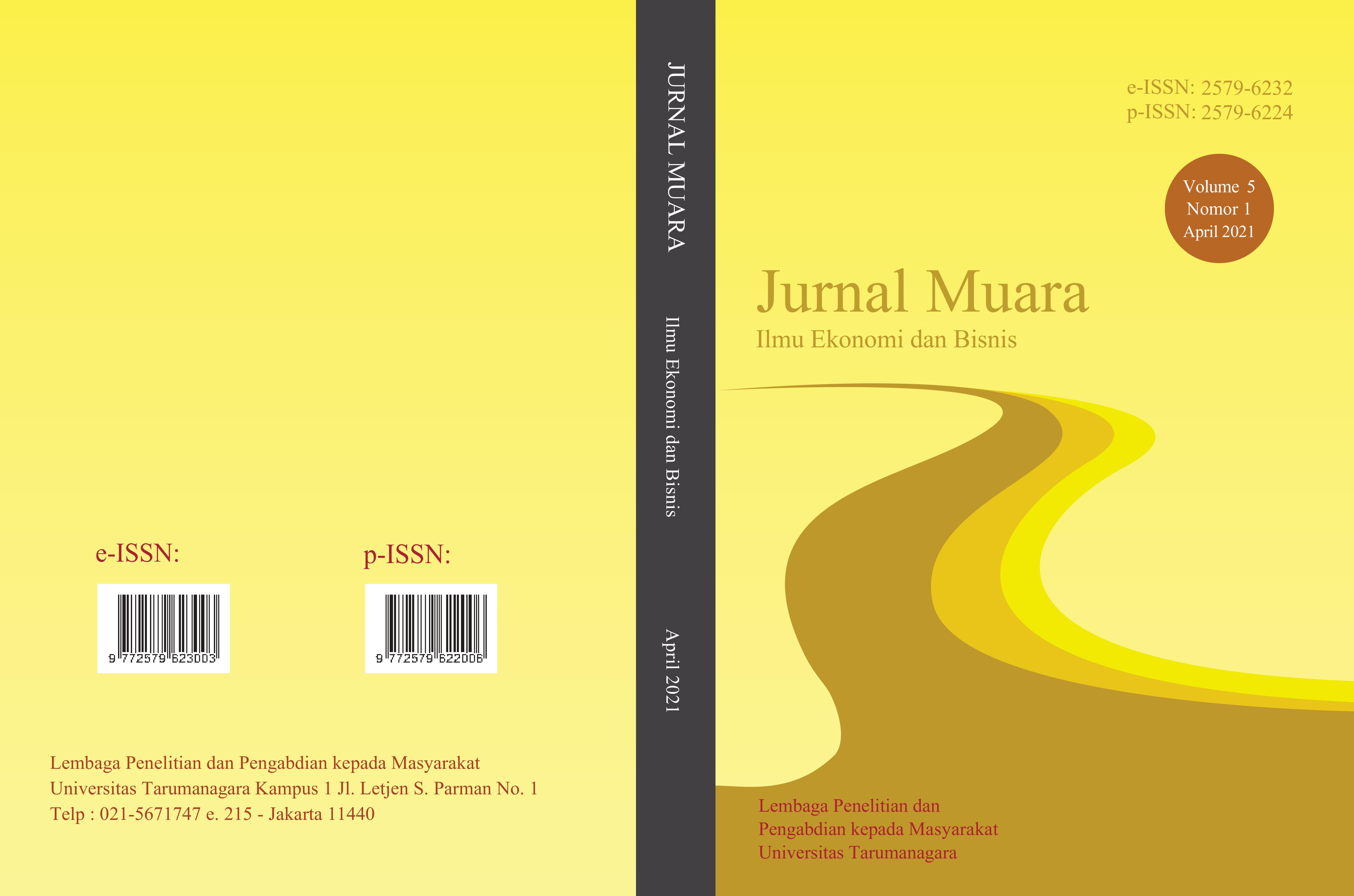THE IMPACT OF BRAND EQUITY TO PURCHASE INTENTION (CASE STUDY FROM IPHONE USERS IN MAKASSAR)
Main Article Content
Abstract
Penelitian ini dilatarbelakangi oleh meningkatnya persaingan di pasar ponsel cerdas. Terlepas dari popularitas iPhone ketika perusahaan memperkenalkan iPhone untuk pertama kalinya pada tahun 2007, iPhone telah mengalami persaingan ketat dari produsen smartphone lainnya. Penelitian ini bertujuan untuk mengetahui pengaruh ekuitas merek dan kepuasan pelanggan terhadap niat beli konsumen produk iPhone. Elemen ekuitas merek yang digunakan dalam penelitian ini adalah kesadaran merek, kualitas persepsi, kepuasan pelanggan, dan loyalitas merek. Penelitian ini dilakukan dengan menyebarkan kuesioner kepada sembilan puluh enam responden dengan menggunakan purposive sampling. Responden adalah orang yang saat ini menggunakan produk iPhone. Data dianalisis dengan menggunakan analisis kuantitatif. Analisis kuantitatif terdiri dari uji validitas dan reliabilitas, uji asumsi klasik, analisis regresi berganda, pengujian hipotesis dengan uji F dan uji t, serta analisis koefisien determinasi (R). Dari hasil penelitian dapat disimpulkan, bahwa kepuasan pelanggan dan loyalitas merek merupakan elemen utama konsumen membeli merek iphone. Sedangkan kesadaran merek dan kualitas persepsi tidak berpengaruh dalam faktor pembelian.
This research is motivated by the increasing competition in the smartphone market. Despite the popularity of the iPhone when the company introduced the iPhone for the first time in 2007, the iPhone has experienced stiff competition from other smartphone manufacturers. This study aims to determine the effect of brand equity and customer satisfaction on consumer purchase intentions of iPhone products. The elements of brand equity used in this study are brand awareness, perceived quality, customer satisfaction, and brand loyalty. This research was conducted by distributing questionnaires to ninety-six respondents using purposive sampling. Respondents are people who currently use iPhone products. Data were analyzed using quantitative analysis. Quantitative analysis consists of validity and reliability tests, classical assumption tests, multiple regression analysis, hypothesis testing with the F test and t test, and analysis of the coefficient of determination (R). The results of research can be concluded that customer satisfaction and brand loyalty are the main elements of consumers buying the iPhone brand. Meanwhile, brand awareness and perceived quality has no effect on purchasing factors.
Article Details
References
Aaker, D. (1991). Managing Brand Equity : Capitalizing on The Value of a Brand Name. New York: The Free Press
Adrián Trillo Trillo, C. C. (2017). Measuring Brand Equity in the Smartphone industry: An approach through Aaker’s Model. A coruna, Spain: Faculty of Economics and Business of University of A Coruña.
Belleau, B. D. (2007). Purchase intention of young consumers. Clothing and textile research journal, 25.
Blackwell, R. M. (2001). Consumer behaviour. Harcourt College publishers.
Bloemer, J. M. (1989). The illusion of consumer satisfaction. Journal of consumer satisfaction, dissatisfaction and complaining behaviour, 43-48.
Bloemer, J. M. (1994). The impact of satisfaction on brand loyalty : urging on classifying satisfaction and brand loyalty. Journal of consumer satisfaction, dissatisfaction and consumer behaviour, vol. 7, 152.
Chen, C. Y. (2008). Assessing the quality of a web-based learning system for nurses. Journal of medical system 33 (4), 317-325.
Fen, Y. S. (2009). Service quality and customer satisfaction : antecedents of customer's re-patronage intentions. . Sunway academic journal no. 4, 59-73.
Ghozali, I. (2005). Aplikasi analisis multivariate dengan program SPSS. Semarang: Badan penerbit Universitas Diponegoro.
Jalilvand, M. R. (2011). The effect of brand equity components of purchase intentions. International journal of service industry management.
Jensen, J. M. (2011). An empirical examination of brand loyalty. Journal of consumer marketing.
Keller, K. L. (2003). Strategic Brand Management: Building, Measuring, and Managing Brand Equity, 4th edition. New York: Pearson.
Khan, I. G. (2012). Impact of brand related attributes on purchase intention of customers : A study about customers on Punjab, Pakistan. Interdisciplinary journal of contemporary research in business., Vol. 4 no. 3.
Lekprayura, S. (2013). Brand equity and factors affecting consumer's purchase intention towards luxury brands in Bangkok Metropolitan Area. World academy of science, engineering and technology. Bangkok.
Lovelock, C. W. (2005). Service marketing in Asia. New York: Prentice Hall.
Malik, P. D. (2013). Importance of brand awareness and brand loyalty in assessing purchasing intention of consumer. International journal of business and social sciences.
Nam, J. E. (2011). Brand equity, brand loyalty and consumer satisfaction. Annals of tourism research, vol. 38, 1009 - 1030.
Statcounter Globalstats. (2020). Retrieved from Mobile Vendor Market Share in Indonesia - August 2020: https://gs.statcounter.com/vendor-market-share/mobile/indonesia
Suddin, L. G. (2009). Predicting intention to choose Halal products using theory of reasoned action. Journal of islamicand middle eastern financial and management, 66 - 76.
Tariq, M. I. (2013). Customer perceptions about branding and purchase intention : A study of FMCG in an emerging market. Journal of basic and applied scientific research, 340 - 347.
Trott, P. T. (2012). Memaksimalkan nilai merek melalui customer relationship management. Jakarta: Salemba empat.


